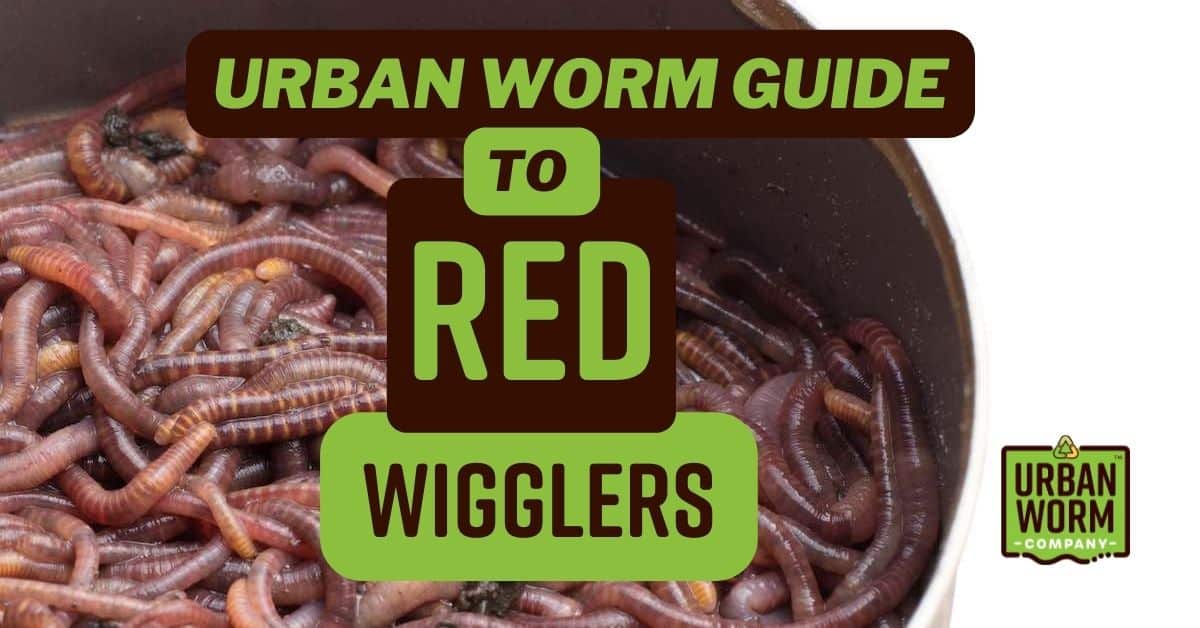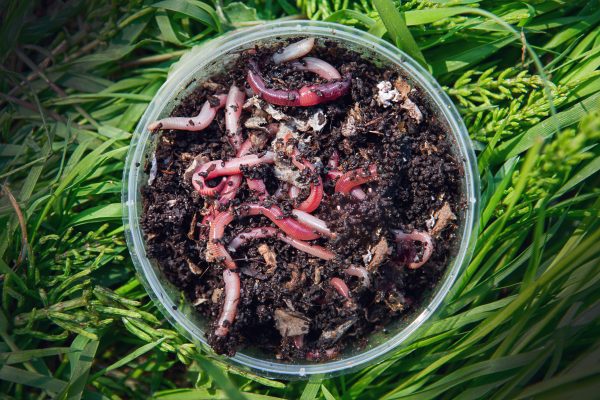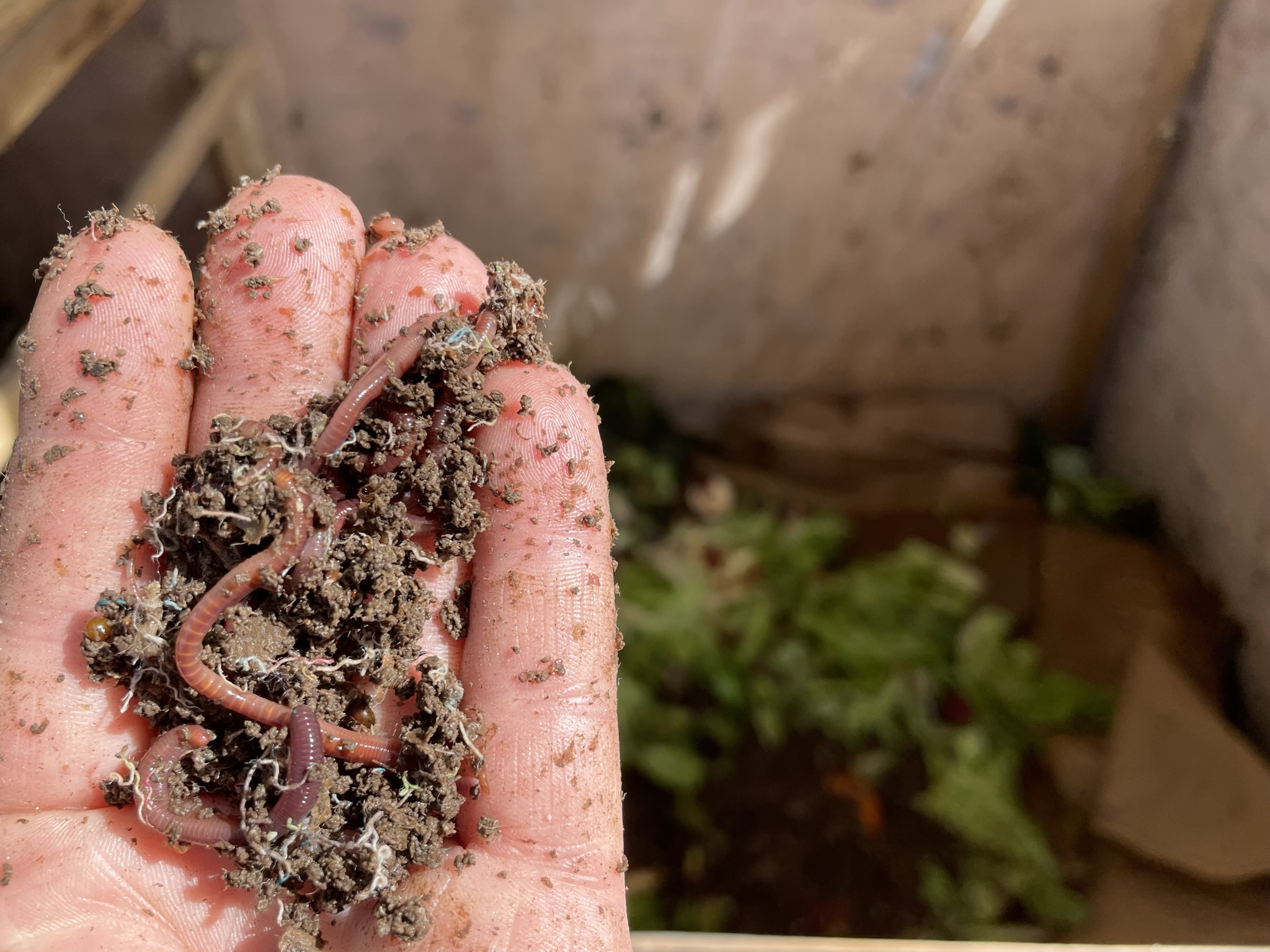Utilizing the Power of Red Wiggler Composting: A Thorough Consider the Environmental and Agricultural Advantages of This Natural Waste Reduction Technique
The practice of red wiggler composting represents an engaging crossway of ecological stewardship and farming technology, using a sustainable remedy to the growing challenges of waste administration and soil deterioration. Through the all-natural process of vermicomposting, natural waste is changed right into an important resource that not just improves dirt however additionally adds to a significant decrease in land fill payments and greenhouse gas discharges. As we explore the complex advantages of this method, we reveal just how it can reshape agricultural methods and advertise environmental recognition, triggering a better exam of its prospective influence on our communities and communities.
What Are Red Wiggler Worms?
Red wiggler worms, clinically called Eisenia fetida, are a varieties of earthworm especially adjusted for composting and natural waste breakdown. These worms flourish in the nutrient-rich environment of breaking down raw material, making them ideal for vermicomposting systems. Growing to a length of about three to 4 inches, red wigglers are identified by their reddish-brown coloration and unique banding patterns along their bodies.
Unlike various other earthworm varieties, red wigglers prefer to occupy the top layers of dirt and organic debris, where oxygen levels are higher and food resources are abundant. Their physical adaptations enable them to refine organic products successfully; they possess a well-developed digestion system that enables them to transform waste into nutrient-rich castings, frequently referred to as "black gold" in gardening and agricultural contexts.
Eisenia fetida plays an important role in the community by helping with the decomposition process, enhancing soil framework, and advertising microbial task. Given their distinct qualities and eco-friendly significance, red wiggler worms have become a main component in sustainable waste management practices and natural gardening efforts, contributing dramatically to environmental health and wellness.
Advantages for Soil Wellness
The addition of red wiggler worms in composting systems provides significant advantages for dirt health. These worms play a crucial duty in the decomposition procedure, breaking down natural matter right into nutrient-rich vermicompost. This natural plant food boosts soil water, framework, and oygenation retention, adding to a more desirable setting for plant growth.
Vermicompost is abundant in essential nutrients such as phosphorus, nitrogen, and potassium, which are essential for plant growth (Red Wiggler Composting). The existence of beneficial microbes in vermicompost even more advertises soil wellness by improving nutrient availability and suppressing soil-borne microorganisms. This dynamic communication promotes a robust dirt ecosystem that sustains sustainable farming practices
Furthermore, red wigglers assist in the formation of humus, a secure raw material that boosts soil fertility and strength. This boosted natural material not just boosts soil appearance however likewise improves its capacity to withdraw carbon, alleviating environment change impacts.
Integrating red wiggler composting into farming systems can, as a result, bring about much healthier dirts, greater crop returns, and boosted sustainability. Therefore, welcoming this natural waste decrease approach can generate profound benefits for both the environment and agricultural efficiency.
Effect on Waste Reduction
Integrating red wiggler worms right into composting systems considerably decreases waste, transforming natural materials that would certainly otherwise add to landfills into valuable compost. This method, called vermicomposting, successfully refines kitchen area scraps, backyard waste, and various other naturally degradable materials, leading to a considerable decrease in the volume of waste sent out to landfills. According to the Environmental Defense Agency, natural waste makes up a significant section of land fill materials, creating unsafe greenhouse gases as it decomposes anaerobically.
By utilizing red wigglers, a highly efficient composting agent, services and families can draw away a substantial amount of natural waste from these landfills. Each extra pound of red wigglers can process and eat regarding half a pound of organic waste daily, causing an exceptional reduction in total waste generation.
In addition, the application of vermicomposting assistances neighborhood waste administration efforts and advertises a circular economy, wherein waste is transformed right into a resource. As neighborhoods increasingly adopt this method, the collective impact on waste reduction comes to be evident, fostering an extra lasting atmosphere and encouraging liable waste management methods. Accepting red wiggler composting not only reduces waste concerns but likewise improves community understanding about lasting living.
Enhancing Agricultural Practices
Using red wiggler worms in farming techniques can substantially boost soil health and plant efficiency. These worms play a crucial function in the composting process, breaking down raw material into nutrient-rich vermicompost. This all-natural plant food boosts soil aeration, structure, and water retention, which are essential for robust plant development.
Moreover, the spreadings created by red wigglers are abundant in necessary nutrients, such as nitrogen, phosphorus, and potassium, promoting healthier plants with greater returns. The microbial task boosted by these worms likewise adds to a growing soil community, enhancing biodiversity and resilience versus pests and diseases.

Furthermore, making use of vermicompost can improve dirt pH levels, making nutrients a lot more accessible to plants. Red Wiggler Composting. Therefore, farmers can grow healthier crops while at the same time adding to dirt preservation efforts, eventually developing a more sustainable agricultural future
Starting With Composting
Beginning your composting journey requires an understanding of the necessary parts and processes entailed. The primary active ingredient in red wiggler composting is natural waste, which can include kitchen scraps, lawn waste, and paper items. It is crucial to keep an equilibrium between environment-friendly products, abundant in nitrogen, and brownish materials, high in carbon. This balance promotes an ideal atmosphere for red wigglers, which are the essential organisms in this composting approach.
Picking an ideal composting system is just as crucial. Worm bins helpful resources can be made for outdoor or interior usage, and they should supply appropriate water drainage and aeration. It is advised to begin with a handful of worms-- about one pound of red wigglers for every one extra pound of waste produced regular.

Conclusion

The method of red wiggler composting stands for a compelling junction of environmental stewardship and farming technology, offering a lasting option to the growing difficulties of waste monitoring and dirt deterioration.Furthermore, the application of vermicomposting supports local waste management efforts and promotes a round economy, in which waste is changed right browse this site into a resource. As neighborhoods progressively adopt this practice, the advancing impact on waste decrease comes to be obvious, cultivating an extra sustainable atmosphere and encouraging liable waste monitoring methods. The key component in red wiggler composting is natural waste, which can include kitchen area scraps, yard waste, and paper products.In summary, red wiggler composting offers a lasting option for natural waste management, producing nutrient-rich vermicompost that substantially enhances soil health and wellness.